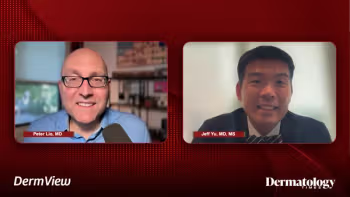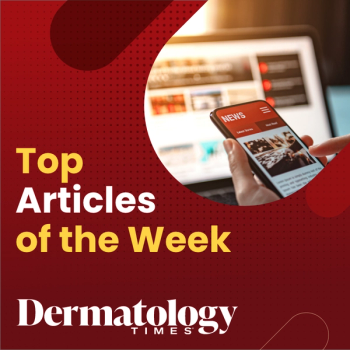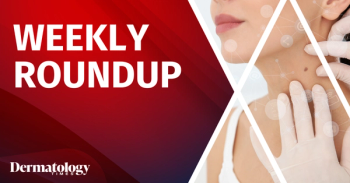
Journal Digest: May 7
Key Takeaways
- Combining Thermage with anti-aging products significantly improves skin hydration, elasticity, and texture, reducing transepidermal water loss.
- Omalizumab in chronic urticaria shows common side effects like fatigue and headache, with no anaphylaxis reported.
This review of the latest dermatologic studies includes insights into short- and long-term effects of topical cosmetics to dermatological procedures, adverse effects of omalizumab in urticaria, and more.
Skin Research and Technology: Short- and Long-Term Effects of Adding Topical Cosmetics to a Dermatological Procedure (Thermage): A Randomized Controlled Comparative Study Exploring the Synergistic Effects
A recent study examined the synergistic effects of dermatological procedures and cosmetic products on aging skin. Researchers evaluated the impact of Thermage treatment alone versus Thermage combined with anti-aging and repair-focused products in 42 women. Both approaches improved skin hydration, elasticity, density, texture, fine lines, and pores within 4 weeks. However, participants using adjunct products experienced significantly enhanced outcomes, including reduced transepidermal water loss.1
Clinical and Experimental Allergy: Spectrum and Impact of Reported Side Effects of Omalizumab in Patients With Chronic Urticaria: A Long-Term Multicentre Real-World Study
A large multinational study assessed the long-term safety of omalizumab in patients with chronic urticaria across 14 specialized centers. Among 1859 patients, 32.9% reported adverse effects, most commonly fatigue, headache, and flu-like symptoms, though no cases of anaphylaxis occurred. Hair loss, reported in 2.9% of patients, emerged as an adverse effect of interest. Individuals reporting adverse effects were more likely to be female, had poorer disease control at baseline, and showed lower treatment response rates.2
Journal of Cosmetic Dermatology: Comparison of Topical 20% Azelaic Acid and 7.5% Dapsone in the Treatment of Mild-To-Moderate Papulopustular Rosacea
A recent retrospective study compared topical 20% azelaic acid and 7.5% dapsone for treating mild to moderate papulopustular rosacea. Among 76 patients, both treatments significantly reduced lesion counts, erythema scores, and Investigator's Global Assessment scores, with no statistically significant differences between the 2 groups. However, dapsone was associated with fewer side effects. These findings suggest that topical dapsone offers comparable efficacy to azelaic acid, with an improved safety profile and may be a preferable option for patients sensitive to treatment-related irritation.3
International Journal of Dermatology: The Safety of Nail Products: Health Threats in the Nail Industry
A recent review highlighted the growing concern over the safety of nail products, revealing that ingredients such as phthalates, toluene, and formaldehyde pose significant dermatologic and systemic risks. These chemicals, often referred to as the "toxic trio," are linked to reproductive toxicity, neurotoxicity, and even cancer. With nail technicians being at higher risk due to repeated exposure, the study emphasizes the need for better product transparency and advocacy for safer practices in the nail industry.4
Journal of the European Academy of Dermatology and Venereology: Low satisfaction with medical care among patients with hidradenitis suppurativa: A multicenter study
A recent study examined the satisfaction levels of hidradenitis suppurativa (HS) patients and their dermatologists with medical care in Germany. The study found that patients with HS reported significantly lower satisfaction (6.7 ± 2.70) compared to patients with psoriasis (8.6 ± 2.03), with the most notable dissatisfaction stemming from the efficacy of systemic therapies. Additionally, dermatologists treating patients with HS also reported lower satisfaction with care (5.1 ± 1.87) compared to those treating psoriasis (7.5 ± 1.80).5
References
- Park S, Choi JY, Suk J, Suh BF, Kim E. Short- and long-term effects of adding topical cosmetics to a dermatological procedure (Thermage): a randomized controlled comparative study exploring the synergistic effects. Skin Res Technol. Published online May 5, 2025.
doi:10.1111/srt.70162 - Soegiharto R, Van der Wind E, Alizadeh Aghdam M, et al. Spectrum and impact of reported side effects of omalizumab in patients with chronic urticaria: a long-term multicentre real-world study. Clin Exp Allergy. Published online May 5, 2025.
doi:10.1111/cea.70067 - Hasanbeyzade S. Comparison of topical 20% azelaic acid and 7.5% dapsone in the treatment of mild-to-moderate papulopustular rosacea. J Cosmet Dermatol. Published online April 30, 2025.
doi:10.1111/jocd.70212 - Scott E, Elston DM, Burkhart CG. The safety of nail products: health threats in the nail industry. Int J Dermatol. Published online May 5, 2025.
doi:10.1111/ijd.17826 - Wolk K, Cugno G, Kokolakis G, et al. Low satisfaction with medical care among patients with hidradenitis suppurativa: a multicenter study. J Eur Acad Dermatol Venereol. Published online May 2, 2025.
doi:10.1111/jdv.20718
What new studies have you been involved with or authored? Share with us by emailing
Newsletter
Like what you’re reading? Subscribe to Dermatology Times for weekly updates on therapies, innovations, and real-world practice tips.


















